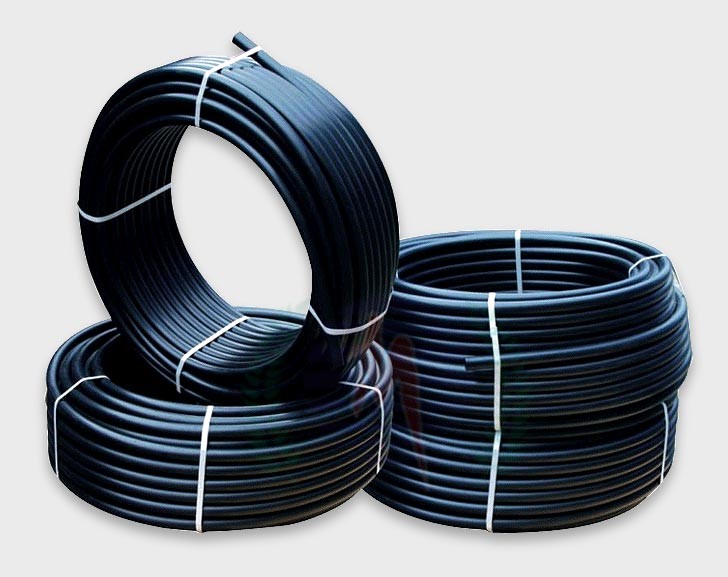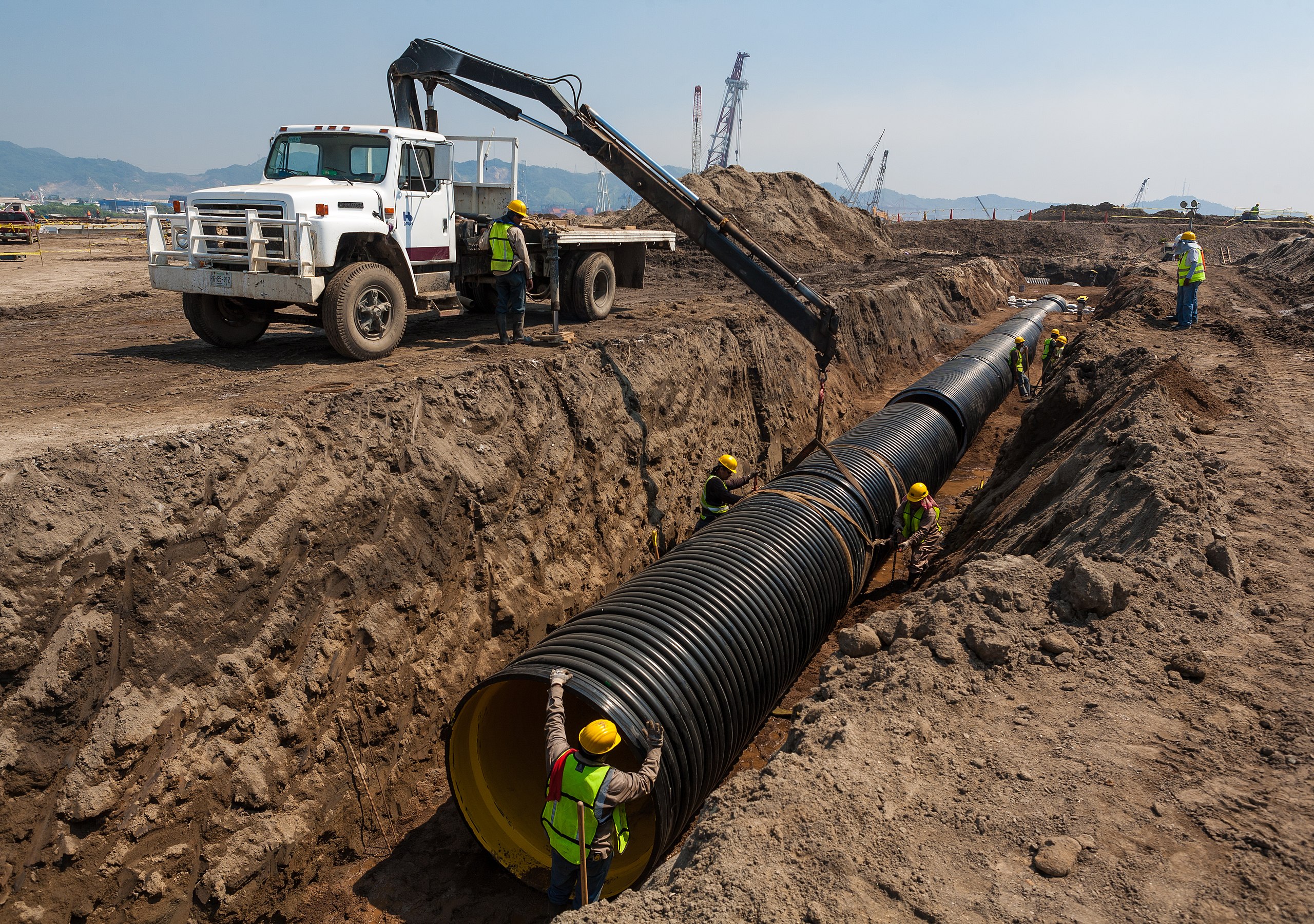Pipe Manufacturing Midland TX: From Raw Material to Finished Pipe
Wiki Article
The Important Actions for Successful Installment of HDPE Pipe in Your Following Job
Effective setup of HDPE pipe requires mindful planning and implementation. Key actions include assessing job needs, preparing the website, and choosing correct joining methods. Each phase plays a critical duty in making sure the stability and performance of the pipeline. Recognizing these vital actions can significantly influence the general success of the project - Texas hdpe pipe manufacturer. Nevertheless, the subtleties of each step might hold the trick to getting rid of usual difficulties faced throughout installationUnderstanding the Perks of HDPE Pipe
High-density polyethylene (HDPE) pipeline provides numerous advantages that make it a preferred selection for different applications. Its high resistance to corrosion and chemicals warranties durability sought after atmospheres, considerably prolonging the life-span of setups. Furthermore, HDPE's versatility enables much easier setup, particularly in tough terrains, as it can bend without damaging. The light-weight nature of HDPE pipe streamlines transport and handling, minimizing labor costs during setup.HDPE pipeline is recognized for its reduced rubbing coefficient, which enhances liquid circulation and reduces power usage. Its smooth building minimizes the danger of leaks, contributing to much better resource administration and ecological defense. Furthermore, HDPE is recyclable, lining up with lasting techniques and decreasing environmental influence. On the whole, the combination of stamina, versatility, and eco-friendliness makes HDPE pipe a superior choice for a wide range of tasks, from water circulation to commercial applications.
Planning Your HDPE Pipe Installation
When intending an installation of HDPE pipeline, careful consideration of a number of essential elements is essential to safeguard a successful job. Initially, task supervisors have to assess the specific requirements of the pipeline, consisting of the meant use, flow prices, and ecological conditions. Understanding these criteria will direct the option of suitable pipeline measurements and product grade.Next, timelines ought to be established, considering procurement schedules and any prospective delays. Coordination with neighborhood authorities for authorizations and regulatory conformity is additionally vital. In addition, an in-depth spending plan must be prepared, encompassing all expenses related to products, labor, and equipment.
It is important to involve a qualified team experienced in HDPE pipeline setup. Their experience will certainly aid alleviate threats, guarantee adherence to market requirements, and inevitably contribute to the project's success. Detailed planning lays the groundwork for a smooth setup procedure and long-lasting performance of the HDPE piping system.
Preparing the Site for Setup
Correct website prep work is vital for the effective setup of HDPE pipeline. Before setup starts, the site has to be thoroughly assessed to guarantee it meets all essential demands. This consists of evaluating the ground for existing structures, utilities, and possible hazards that might hinder the setup procedure.

Correct elevation and positioning should be established to keep a consistent slope for drainage objectives. Correct drain around the installation site is additionally critical to avoid water buildup, which can cause issues down the line.
Methods for Signing Up With HDPE Pipings
Accomplishing a reliable link between HDPE pipelines is important for guaranteeing the honesty and longevity of the installment. Numerous methods exist for joining these pipelines, each matched for different project demands. Fusion welding is one of the most usual techniques, making use of heat to bond the pipe ends with each other, producing a seamless and sturdy link. This technique can be more classified into outlet fusion and butt blend, relying on the pipe configurations.Mechanical installations are an additional choice, utilizing clamps and threaded connectors to join sections of HDPE pipeline. While normally faster to mount, they might need added upkeep with time. Electrofusion is a customized technique that includes utilizing electrical current to warmth and fuse the pipelines with particularly developed installations, ensuring direct burial gas line a solid bond. Picking the ideal joining method is essential, as it straight impacts the general efficiency and dependability of the HDPE piping system in the designated application.
Testing and Assessment of Installed Water Lines
The screening and inspection of installed HDPE pipelines are essential to ensuring their functionality and long life. This procedure includes visual assessment techniques, pressure screening approaches, and leakage discovery treatments to determine potential problems. By employing these methods, specialists can confirm the honesty of the installment before it is taken into use.Visual Inspection Techniques
Utilizing effective aesthetic assessment strategies is essential for guaranteeing the integrity of mounted HDPE pipelines. Inspectors should methodically examine all visible areas of the pipe to identify any indications of damage, misalignment, or incorrect installation. Secret indicators to assess consist of joint honesty, surface area irregularities, and connections. Examiners may utilize devices such as amplifying glasses or cams to improve visibility and information. It is necessary to look for indicators of ecological stress, such as bending or excessive bending, which might jeopardize efficiency. Constant documentation of findings allows for tracking modifications gradually and assists overview essential repair work. By adhering to established visual examination procedures, job groups can significantly minimize the threat of future failures and assure long-term dependability of the piping system.Pressure Examining Techniques
Visual assessment acts as an initial procedure, yet it is not enough by itself to guarantee the performance of mounted HDPE pipelines. Pressure testing approaches are vital for making certain the honesty of these systems. Commonly, hydrostatic screening is used, where the pipelines are loaded with water and subjected to stress degrees over the designated operating stress. This technique aids identify weaknesses or potential leakages. Pneumatically-driven testing can likewise be made use of, although it brings greater risks due to the compressibility of air. Regardless of the technique chosen, adhering to sector criteria and safety procedures is vital. After performing pressure examinations, extensive paperwork is needed to validate the results and validate that the installation satisfies all functional demands before continuing to the next stage of the task.
Leak Detection Treatments
Exactly how can one guarantee that installed HDPE pipelines are without leakages? Efficient leak discovery treatments are crucial to protect the integrity of the system. Visual evaluations need to be carried out, looking for indicators of water accumulation or soil erosion around pipe joints. Following this, stress screening can confirm the system's strength. A typical technique is the hydrostatic examination, where water is introduced under pressure, checking for declines that show prospective leakages. Additionally, advanced modern technologies, such as acoustic sensing units or infrared thermography, can spot leakages that may not be noticeable. Normal monitoring and upkeep more add to the long life of HDPE pipes, ensuring they stay leak-free throughout their functional life expectancy. Correct documentation of these treatments is essential for conformity and future reference.Upkeep Tips for Long-Term Efficiency
To assure the long life of HDPE pipes, developing a normal inspection schedule is important. This aggressive strategy allows for the early discovery of potential issues, minimizing expensive repairs. Additionally, executing appropriate cleansing methods will help maintain peak performance and avoid buildup that can affect performance.Normal Evaluation Arrange
Although HDPE pipelines are known for their durability and resistance to rust, developing a routine evaluation routine is vital for guaranteeing their lasting performance. Routine inspections aid identify possible problems such as leaks, joint honesty, and ecological effects that might impact the pipeline's functionality. It is recommended that examinations happen at the very least biannually, or extra regularly in atmospheres with extreme conditions. American Plastics HDPE Pipe for Oilfield. Throughout these analyses, visual checks need to be conducted to identify signs of wear or damage. Furthermore, making use of innovation such as ultrasonic screening can provide more insights into the pipeline's problem. By implementing an organized inspection schedule, project supervisors can proactively address issues, therefore prolonging the lifespan of HDPE pipes and preserving system performanceAppropriate Cleaning Techniques
Appropriate cleaning strategies play an essential duty in maintaining the long-lasting performance of HDPE pipelines. Regular cleansing stops the buildup of particles, debris, and biofilm, which can result in blockages and decreased circulation effectiveness. Operators ought to use methods such as high-pressure water jetting or foam cleansing to properly eliminate pollutants without harming the pipe surface area. It is vital to stay clear of making use of harsh chemicals that may degrade HDPE product. Additionally, set up upkeep checks need to consist of aesthetic evaluations for any kind of indicators of wear or damages. Effectively trained employees must carry out these cleansing processes, ensuring compliance with security and environmental regulations. By carrying out these techniques, the life expectancy of HDPE pipelines can be considerably expanded, guaranteeing perfect performance throughout their operational life.Regularly Asked Concerns
What Are the Ecological Impacts of HDPE Pipeline Manufacturing?
The ecological effects of HDPE pipeline production consist of greenhouse gas exhausts, energy intake throughout manufacturing, prospective plastic contamination, and obstacles in recycling. HDPE's long life and resistance to deterioration can mitigate some ecological worries.Exactly How Does HDPE Pipe Contrast to Other Materials?

What Equipment Are Needed for HDPE Pipeline Setup?
Essential tools for HDPE pipeline installment include a combination device, pipe cutters, shovels, determining tape, and safety equipment. Correct tools guarantees effective, safe handling and setup, adding to the project's general success and honesty.Are There Any Kind Of Particular Regulations for HDPE Pipe Setup?
Particular laws for HDPE pipe installment vary by area, often regulated by regional, state, or federal codes. Compliance with these policies assurances safety, environmental management, and performance, making adherence important for effective project outcomes.Can HDPE Water Lines Be Recycled After Use?
Yes, HDPE pipes can be recycled after usage. Their polycarbonate nature enables reprocessing, making them appropriate for reusing into new items. This sustainability element adds to ecological preservation and promotes round economy practices in building.Report this wiki page